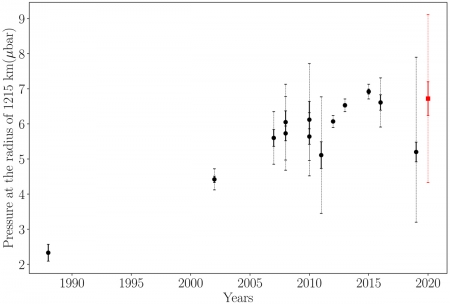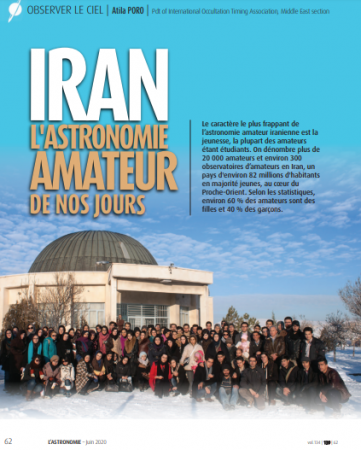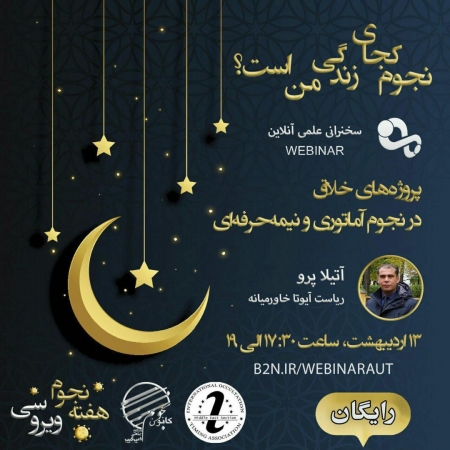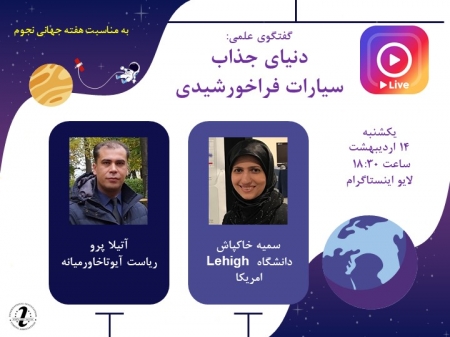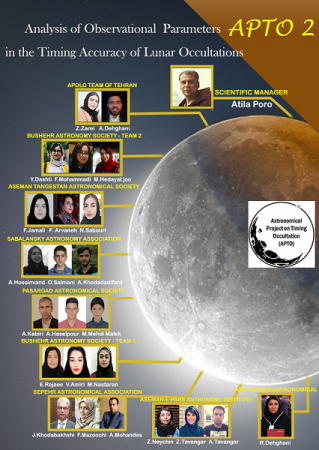New Study on Asteroid Rotation Periods Accepted for Publication
2025/09/24 19:14
A new research article on asteroid rotational characteristics, conducted by researchers from IOTA/ME, has been accepted for publication in Astrophysics and is now available on ArXiv: https://arxiv.org/abs/2508.17415
The study analyzes a dataset of 34,326 asteroids to explore the statistical relationship between diameter and rotation period. The results highlight three main populations: a dense cluster below the spin barrier, a group of small, fast-rotating asteroids, and a more diffuse distribution.
Geometric and density-based analyses revealed that the densest region consists of asteroids with diameters of 3–10 km and rotation periods of 3–9 hours, some of which extend beyond the spin barrier. Furthermore, a third-degree polynomial model was found to provide the most stable representation of the overall trend, and an empirical lower boundary was proposed, below which no asteroids were detected.
Read More...
Successful Observation of an Asteroidal Occultation at the University of Sharjah Observatory
2025/09/24 18:26
On 21 March 2025, an occultation event was successfully observed and recorded by Mohammad Fadel Talafha, Research Analyst at SAASST, University of Sharjah. The observation took place at the University of Sharjah Observatory (M47 / SAO) in Sharjah, United Arab Emirates.
During this event, asteroid (1761) Edmondson occulted the star TYC 4948-00277-1 (HD 110047) with a visual magnitude of 8.99 (V filter) for a total duration of 2.166 seconds.
Start time: 22:14:30.460
End time: 22:14:32.626
Observation site coordinates: 25.282 N, 55.462 E (Sharjah, UAE)
The event was recorded using a TEC APO 180 f/7 Fluorite Apochromat telescope equipped with a Lumenera LM165 camera, and the timing was performed with a PC-based method.
Read More...
Published a paper by IOTA/ME: Study of Pluto’s atmosphere based on 2020 stellar occultation light curve results
2021/09/23 18:48
https://www.aanda.org/articles/aa/full_html/2021/09/aa41718-21/aa41718-21.html
https://doi.org/10.1051/0004-6361/202141718
Title: Study of Pluto’s atmosphere based on 2020 stellar occultation light curve results
Authors: Atila Poro, Farzaneh Ahangarani Farahani, Majid Bahraminasr, Maryam Hadizadeh, Fatemeh Najafi Kodini, Maryam Rezaee, and Mahsa Seifi Gargari
Abstract: On 6 June 2020, Pluto’s stellar occultation was successfully observed at a ground-based observatory in Iran, and Pluto’s atmospheric parameters were investigated. We used an atmospheric model of Pluto, assuming a spherical and transparent pure N2 atmosphere. Using ray-tracing code, the stellar occultation light curve was satisfactorily fit to this model. We found that Pluto’s atmospheric pressure at the reference radius of 1215 km was 6.72 ± 0.48 μbar in June 2020. Our estimated pressure shows a continuation of the pressure increase trend observed since 1988 and does not confirm the rapid pressure decrease tentatively reported in 2019. The pressure evolution is consistent with a seasonal transport model. We conclude that the N2 sublimation process from Sputnik Planitia is continuing. This study’s result is shown on the diagram of the annual evolution of atmospheric pressure.
Read More...
An article on amateur astronomy in Iran was published in L'Astronomie magazine
2020/05/28 00:26
"The most important characteristic of amateur astronomy in Iran is the young astronomers, most of whom are students. It is estimated that there are more than 20,000 amateurs and about 300 amateur observatories in Iran. According to general statistics, about 60 percent of amateur astronomers in Iran are girls and 40 percent are boys".
This is a part of the article published in L'Astronomie magazine in France. This article wrote by Atila Poro the president of IOTA/ME.
Download: Amateur Astronomy in Iran Nowadays
Read More...
Two online programs on the occasion of World Astronomy Week (2020)
2020/04/30 16:20
On the occasion of World Astronomy Week (2020), we will offer two programs through online training for astronomy enthusiasts. The first program will be held in collaboration with Amirkabir University Astronomy Center (Tehran) http://nojumaut.ir/, and the second program will be in the form of Instagram Live.
Read More...
The APTO.2 project was also finished
2020/04/30 16:09
The APTO.2 project was also completed with the publication of a scientific report in the JOE (2020) journal (http://joe.iota-me.com/joe-7.html). In this project, nine mature astronomical teams from Iran have participated. The project was conducted under the supervision of IOTA/ME.
The International Occultation Timing Association Middle East Section
Bushehr Astronomy Society, Team 2, Bushehr, Iran
Sepehr Astronomical Association, Kashan, Iran
Aseman Tangestan Astronomical Society, Tangestan, Iran
SabalanSky Astronomy Association, Team 2, Ardabil, Iran
Aseman-e Pars Institute, Shiraz, Iran
Pasargad Astronomical Society, SaadatShahr, Iran
Apolo Astronomical Team of Tehran, Tehran, Iran
Bushehr Astronomy Society, Team 1, Bushehr, Iran
Abu Rayhan Astronomical Group, Mobarakeh, Iran
Read More...


